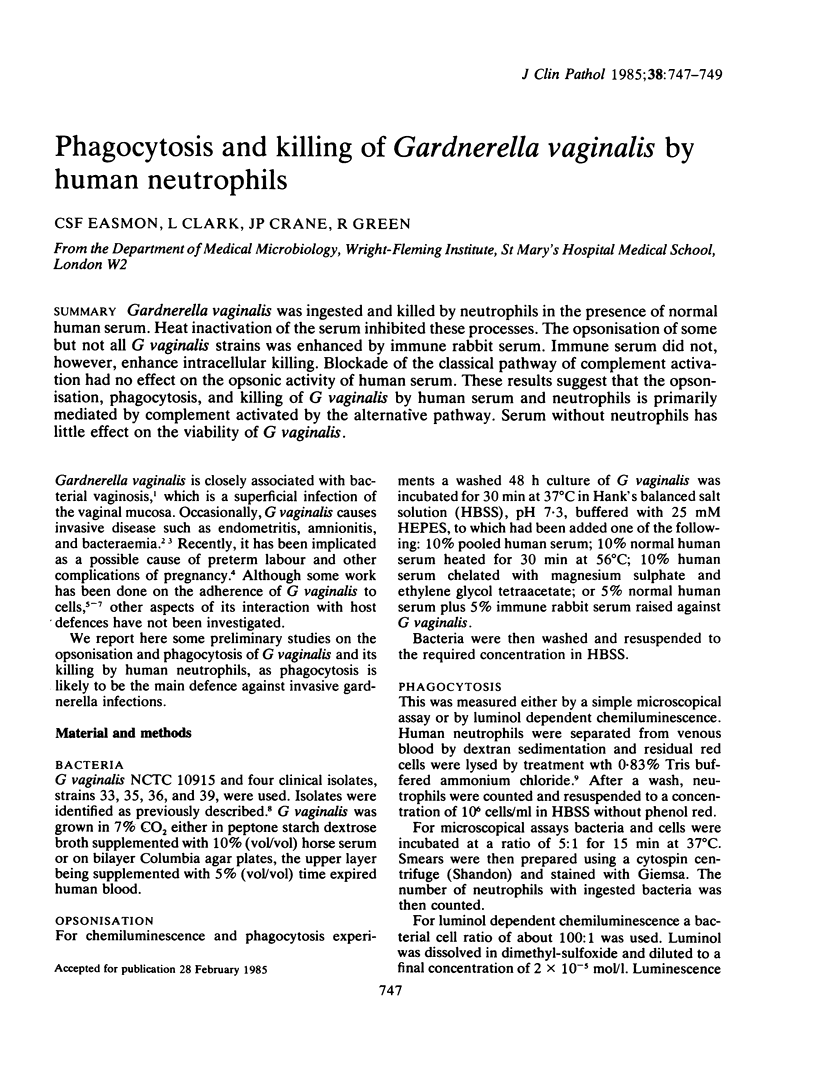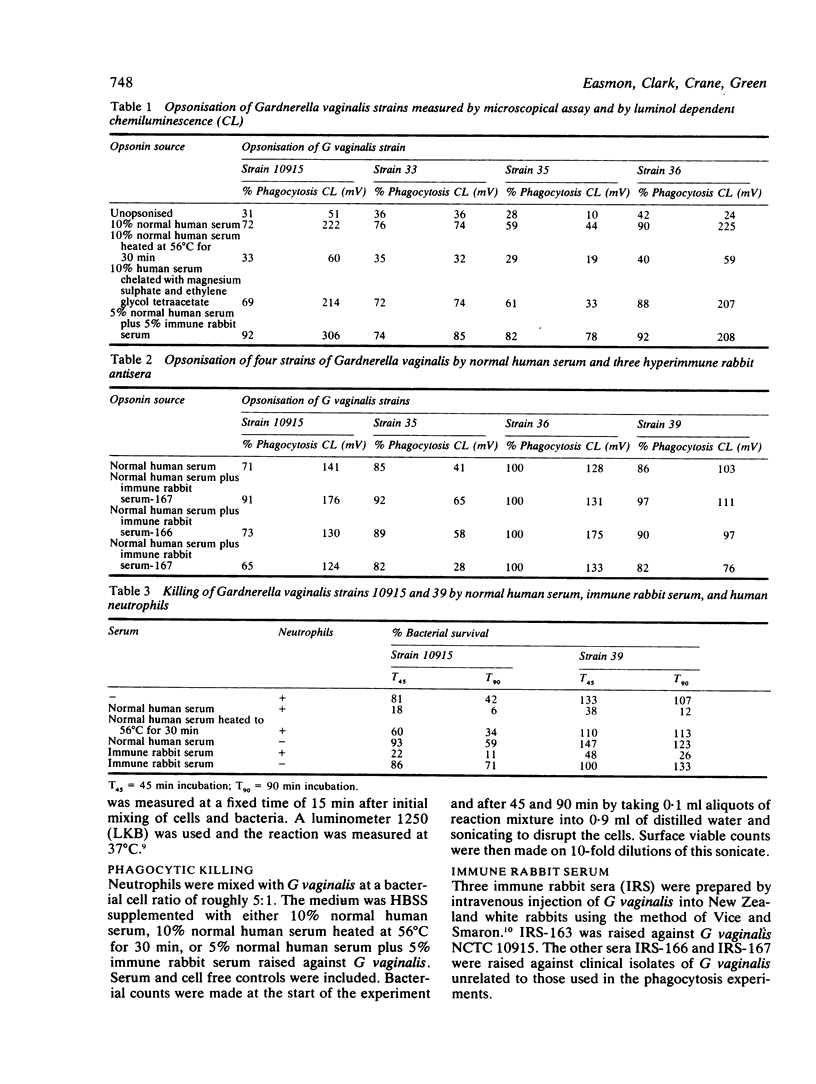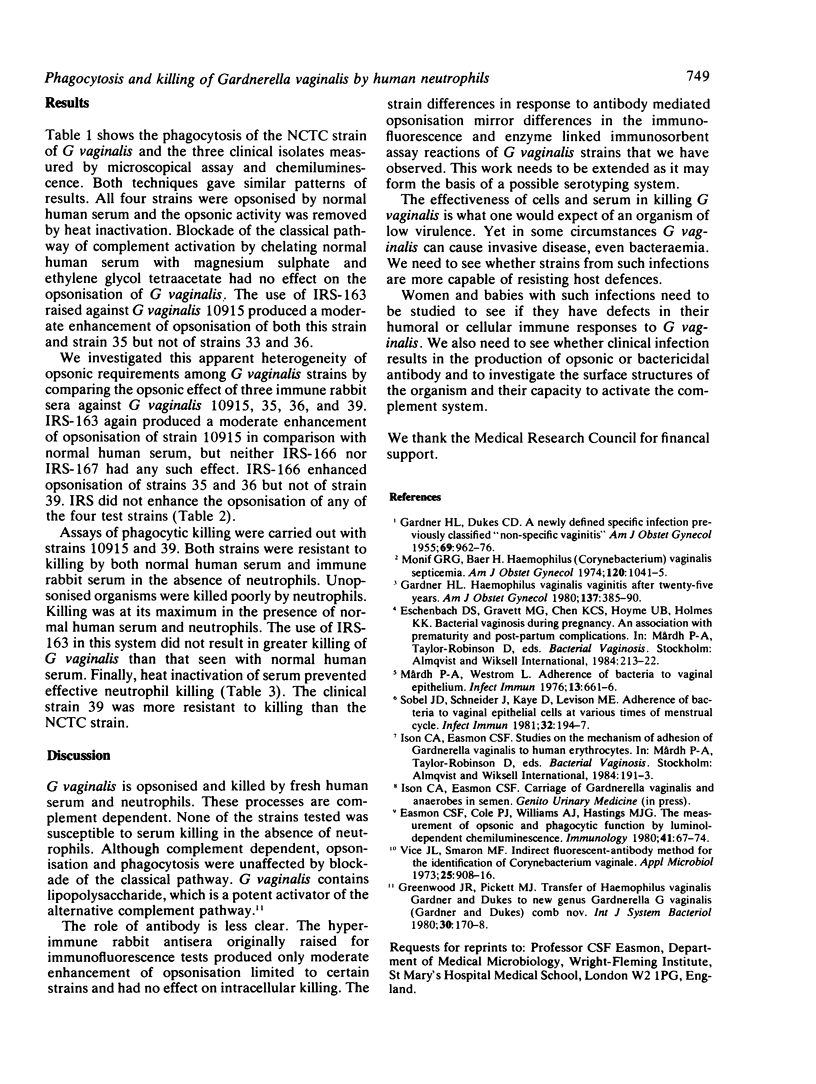Abstract
Gardnerella vaginalis was ingested and killed by neutrophils in the presence of normal human serum. Heat inactivation of the serum inhibited these processes. The opsonisation of some but not all G vaginalis strains was enhanced by immune rabbit serum. Immune serum did not, however, enhance intracellular killing. Blockade of the classical pathway of complement activation had no effect on the opsonic activity of human serum. These results suggest that the opsonisation, phagocytosis, and killing of G vaginalis by human serum and neutrophils is primarily mediated by complement activated by the alternative pathway. Serum without neutrophils has little effect on the viability of G vaginalis.
Full text
PDF


Selected References
These references are in PubMed. This may not be the complete list of references from this article.
- Easmon C. S., Cole P. J., Williams A. J., Hastings M. The measurement of opsonic and phagocytic function by Luminol-dependent chemiluminescence. Immunology. 1980 Sep;41(1):67–74. [PMC free article] [PubMed] [Google Scholar]
- Eschenbach D. A., Gravett M. G., Chen K. C., Hoyme U. B., Holmes K. K. Bacterial vaginosis during pregnancy. An association with prematurity and postpartum complications. Scand J Urol Nephrol Suppl. 1984;86:213–222. [PubMed] [Google Scholar]
- GARDNER H. L., DUKES C. D. Haemophilus vaginalis vaginitis: a newly defined specific infection previously classified non-specific vaginitis. Am J Obstet Gynecol. 1955 May;69(5):962–976. [PubMed] [Google Scholar]
- Gardner H. L. Haemophilus vaginalis vaginitis after twenty-five years. Am J Obstet Gynecol. 1980 Jun 1;137(3):385–391. doi: 10.1016/0002-9378(80)90924-2. [DOI] [PubMed] [Google Scholar]
- Ison C. A., Easmon C. S. Studies on the mechanism of adhesion of Gardnerella vaginalis to human erythrocytes. Scand J Urol Nephrol Suppl. 1984;86:191–193. [PubMed] [Google Scholar]
- Monif G. R., Baer H. Haemophilus (Corynebacterium) vaginalis septicemia. Am J Obstet Gynecol. 1974 Dec 15;120(8):1041–1045. doi: 10.1016/0002-9378(74)90147-1. [DOI] [PubMed] [Google Scholar]
- Mårdh P. A., Westtöm L. Adherence of bacterial to vaginal epithelial cells. Infect Immun. 1976 Mar;13(3):661–666. doi: 10.1128/iai.13.3.661-666.1976. [DOI] [PMC free article] [PubMed] [Google Scholar]
- Sobel J. D., Schneider J., Kaye D., Levison M. E. Adherence of bacteria to vaginal epithelial cells at various times in the menstrual cycle. Infect Immun. 1981 Apr;32(1):194–197. doi: 10.1128/iai.32.1.194-197.1981. [DOI] [PMC free article] [PubMed] [Google Scholar]
- Vice J. L., Smaron M. F. Indirect fluorescent-antibody method for the identification of Corynebacterium vaginale. Appl Microbiol. 1973 Jun;25(6):908–916. doi: 10.1128/am.25.6.908-916.1973. [DOI] [PMC free article] [PubMed] [Google Scholar]


